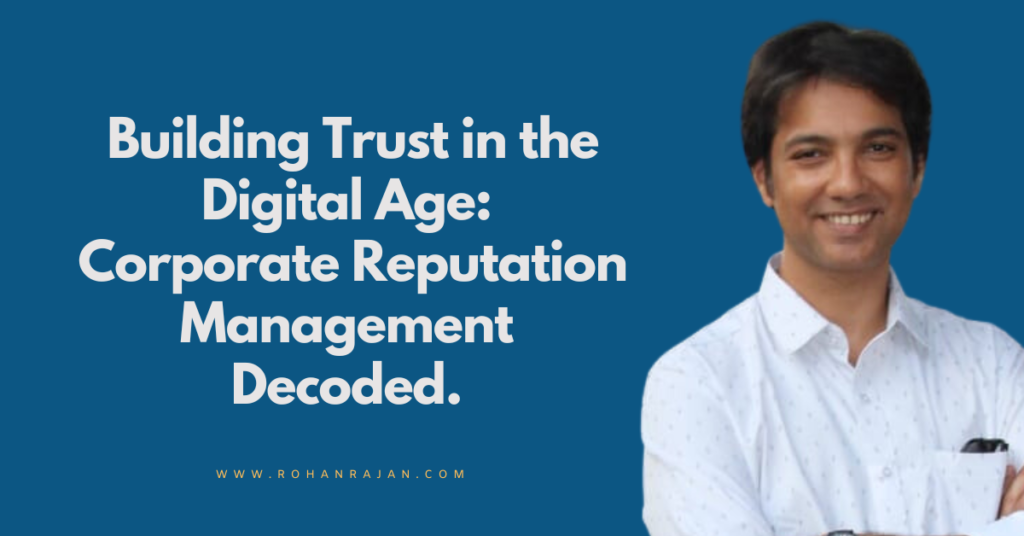Introduction
In today’s digital landscape, where information spreads like wildfire, corporate reputation management has become more crucial than ever before. This article delves into the intricacies of handling corporate reputation management, exploring its definition, components, and strategies for effective maintenance.
Understanding Corporate Reputation
Corporate reputation is more than just a company’s image; it encompasses how the public perceives its values, actions, and brand. Key components include brand image, public perception, and customer feedback. Nurturing a positive reputation is vital for sustained success in the competitive business world.
The Role of Social Media
Social media has become a powerful force in shaping corporate reputations. With the ability to influence public opinion, it can make or break a company. This section explores the impact of social media on corporate reputation, citing real-life examples of reputation crises.
Strategies for Effective Corporate Reputation Management
Proactive communication, transparency, crisis management plans, and stakeholder engagement are crucial strategies for maintaining a positive corporate image. By adopting these practices, companies can build resilience against potential reputation threats.
Digital Presence and SEO
A strong online presence is integral to corporate reputation management. This section delves into the importance of digital visibility and offers SEO techniques to enhance online reputation. Implementing these strategies ensures that a company’s positive aspects rank higher in search engine results.
Case Studies
Examining both success stories and failures in corporate reputation management provides valuable insights. By learning from others’ experiences, companies can adapt their strategies to navigate reputation challenges effectively.
Monitoring Tools and Metrics
To gauge the effectiveness of reputation management efforts, utilizing monitoring tools and key metrics is essential. This section introduces tools for tracking corporate reputation and outlines metrics that help assess the overall health of a company’s image.
Building a Positive Reputation
Fostering a positive reputation involves initiatives such as employee advocacy, corporate social responsibility (CSR), and community engagement. These actions contribute to a company’s credibility and goodwill.
Challenges in Corporate Reputation Management
While reputation management is crucial, challenges abound. Addressing negative publicity and online criticism requires a strategic approach. This section provides insights into overcoming these challenges.
Future Trends
Looking ahead, emerging technologies will play a significant role in corporate reputation management. This section explores the trends shaping the future landscape of reputation management and offers predictions for what lies ahead.
Conclusion
In conclusion, corporate reputation management is an ongoing process that requires diligence and adaptability. By understanding its components, implementing effective strategies, and embracing future trends, companies can safeguard and enhance their reputations in a dynamic business environment.
FAQs
How often should a company assess its corporate reputation?
Regular assessments are recommended, at least quarterly, to stay ahead of potential issues.
Can a company recover from a reputation crisis?
Yes, with strategic planning, transparency, and proactive communication, recovery is possible.
Is social media the only factor influencing corporate reputation?
While significant, other factors like customer service and product quality also play crucial roles.
What role do employees play in corporate reputation management?
Employee advocacy can positively impact corporate reputation by aligning staff with company values.
How can small businesses approach reputation management on a limited budget?
Focus on local community engagement, online reviews, and optimizing digital presence within budget constraints.




